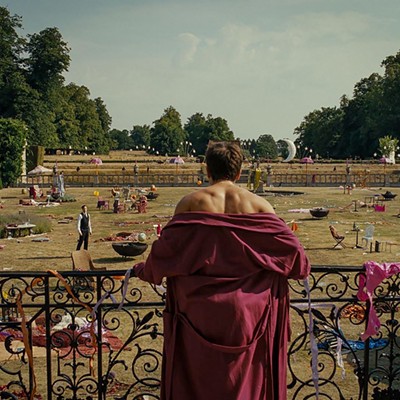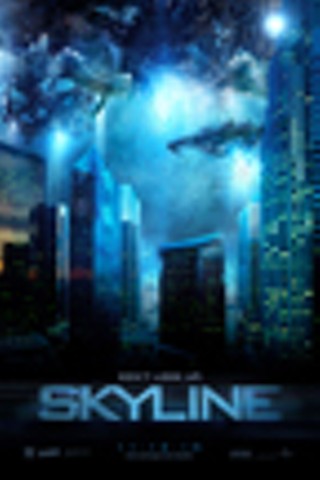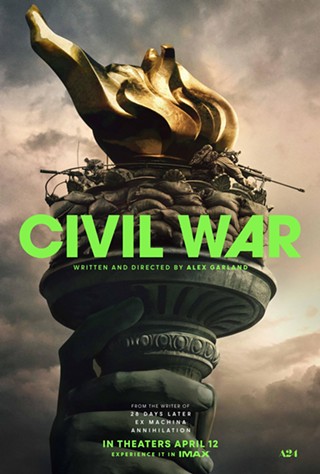Piercing blue lights are the first sign of trouble. Within minutes of their arrival in Los Angeles, the lights have hypnotized thousands, leading them to their deaths; the ones who are lucky enough to dodge the power of the shimmering lights get the rough stuff.
Two lifelong friends, along with their significant others and a few stragglers, fight for their lives while perched in a penthouse apartment, watching the destruction and realizing that their odds of survival probably won't improve no matter what they decide to do next. It's a paradox expertly summed up by The Clash: "If I go there will be trouble, and if I stay it will be double."
Skyline is the latest in a long line of alien-invasion films, and it offers very little that hasn't been seen before. It isn't as star-driven as War of the Worlds; it isn't as well-marketed as Cloverfield; and it isn't anywhere near as smart or fulfilling as District 9. It is, however, a reaction to those last two movies, relatively low-budget science-fiction flicks that caught fire with audiences for the right reasons.
However, Skyline is a $10 million movie that looks like it cost about half that amount. Far too much time is spent on its visual effects, with not enough time on anything else. We know that aliens have descended from somewhere; they have it in for the City of Angels; they are apparently fueled by human brains. If the other elements in the film were up to snuff, that could be an acceptable arrangement.
But Skyline is so poorly written and photographed that even the good effects—and there are a few—don't lift the film very high. Directing tandem Colin and Greg Strause, who pretentiously presume the credit "Brothers Strause" as if they've really accomplished something, let their film die on the vine by not giving it (or its characters) a shred of personality. This failure stands out most during a 20-minute stretch that appears reserved for character development: The Strauses show us a gripping opening sequence featuring the early stages of the attack—and then flash back to the day before, when everything is a lot less interesting.
The cinematography is even harder to bear during this invasion intermission. Many filmmakers have to rely on digital video these days, and it is particularly tricky shooting at night. Michael Mann found a way to do it artistically in Collateral, but he's Michael Mann. In Skyline, the night photography (or, technically, videography) is grainy, blurry and washed out so much that you wonder how any of it survived the final cut. The pity is that none of it needed to; the details of the night before are inconsequential once the attack begins, and there should certainly be another 15 minutes of fight footage sitting around somewhere.
The differences between District 9 and Skyline are obvious and abundant. District 9 deservedly received a Best Picture nomination for giving societal undertones to a story that could have been just as silly as this one, as well as for standing side by side with Avatar in helping rewrite the visual language of modern science fiction. Skyline, on the other hand, looks like a Syfy TV movie, the kind that routinely stars Debbie Gibson and/or Tiffany and has a title like Octoshark vs. Megashrimp.
Only Skyline isn't even dumb fun. It's just dumb.











